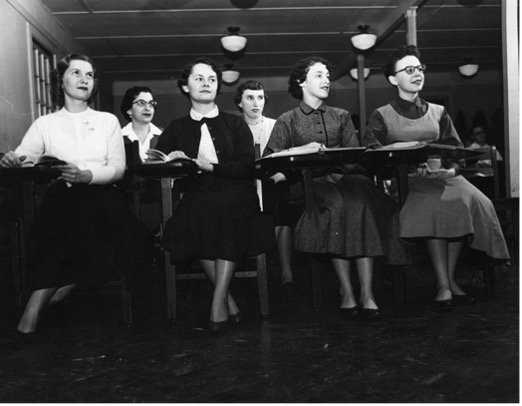Top Five Surprising Facts About the Party Scene on Campus in the 60s and 70s

By Julia Gavigan – Co-Managing-Editor
SCRANTON – The United States in the 1960s and 1970s was a tumultuous time in which people were swept up in the Anti-Vietnam war movement, the Civil Rights movement and the second wave of feminism. Despite all these changes there is one thing that has remained constant since then: University of Scranton students know how to have a good time.
Here are the top five surprising things about the party scene on campus in the 60s and 70s.
- Students ordered kegs from the student government
In 1972, the student government had an arrangement with the local distributors in Scranton. If students wanted to host a party in their dorm over the weekend and wanted a keg of beer, they would simply walk over to the student government office.
Karen Pennington, Ph.D., was a freshman at the University in 1972 and recalls the process.
“Back then we were allowed to have parties in the buildings. We could also have kegs…so you would go to the student government office and order your keg for the party, for the weekend. I can’t even imagine this today,” Pennington said.
- Students were not allowed alcohol on campus (even those over 21).
It wasn’t until the early 70s when students who were over the age of 21 were allowed to drink on campus. Before then, students who were caught, regardless of their age, were punished. In 1968, for example, eight students were caught drinking in the Aquinas office and were put on probation. Not only were they over the age of 21, but among them was the student government president and three officers of the student newspaper. In response, the entire student body held a protest against the punishment, declaring they wanted the autonomy to govern themselves.
Students banded together and demanded immediate change to university policy.
“We demand that by Monday, Dec. 2, the administration agrees with our position and settles down to serious negotiations with representatives from this ad hoc committee,” said a student representative.
- Women Students were locked in their dorms (or locked out) every night at midnight.
In the first year of coeducation, administrators enacted a rule in which all women students must be in their dorms by midnight. The double standard was glaring considering the rule only pertained to women and not their male peers.
“Some of us staged a protest in October or November to say that this is really stupid. We were adults, we were 18, and the law had just passed that 18-year-olds were legally adults. And we won the fight to not have our door locked at midnight,” Pennington said.
- Billy Joel frequently held concerts at Marywood
Another popular thing to do at the U in the 70s was to go to concerts on the weekends. In the age of disco, going dancing and seeking out different bands was a favorite pastime. Some students at the U went to concerts hosted by Marywood where Billy Joel performed nearly every weekend before he became famous.
- The University installed a kitchen in the only female dorm, so they threw dinner parties.
In 1972, the University only made two major changes to the campus when it transitioned to coeducation: the installation of bathrooms for women, and a kitchen in Fitch Hall, the only female dormitory. The idea is insulting, but the women students made the best of it.
“We would have dinner parties and drink wine. We were very sophisticated…I guess they assumed that women needed to cook. So, we would have dinner parties and just hang out,” Pennington said.
Life in the 60s and 70s on campus is distinctly different from campus culture today; however, the fighting spirit of royals to enjoy their college experience is identical across every decade.
